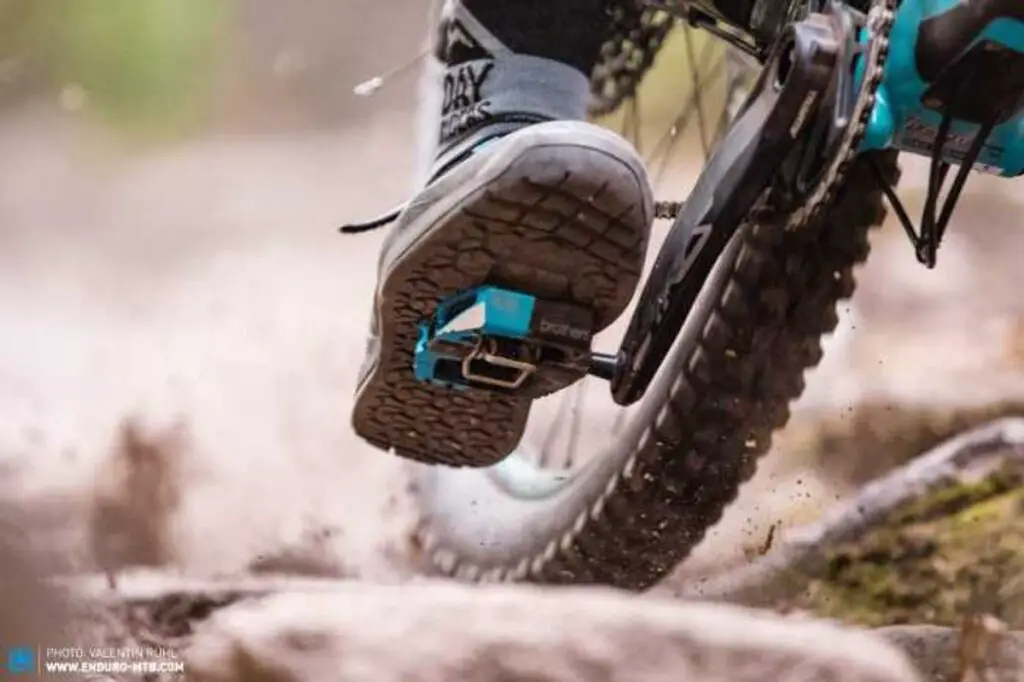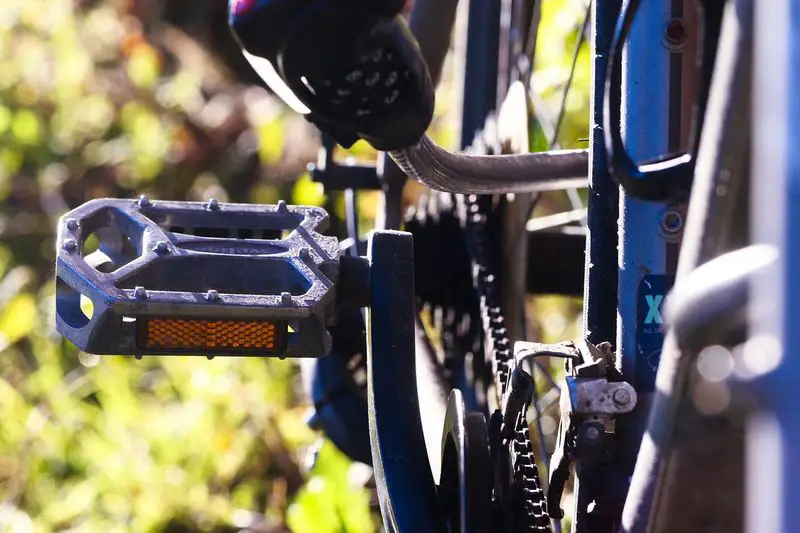There’s been a lot of talk about clipless pedals for mountain biking. Some people swear by them for their climbing ability, while others say they’re not really necessary and just add more weight to your bike. So, do clipless pedals help with climbing? Let’s take a closer look.
First of all, it’s important to understand the difference between clipless and flat pedals. With flat pedals, you have to constantly adjust your foot position on the pedal in order to keep it planted. This can be difficult when you’re trying to power up a hill since you don’t want to lose any energy by having to readjust your foot position.

Clipless pedals solve this problem by locking your foot in place so you can focus all your energy on powering up the hill.
But there are some drawbacks to clipless pedals as well. They can be more difficult and time-consuming to get used to, and if you fall off your bike it can be harder to get back on. Additionally, they tend to add weight to your bike which can make it harder uphill.”
Do clipless pedals save energy?
When it comes to bicycling, there are a few different types of pedals that riders can choose from. One option is known as clipless pedals, which have become increasingly popular in recent years. Clipless pedals are designed to allow riders to more efficiently transfer power from their legs to the pedals, resulting in a smoother and more efficient pedaling motion. But do clipless pedals actually save energy?
While it is true that clipless pedals can help riders to more efficiently transfer power to the pedals, it is important to note that this does not necessarily mean that they will automatically save energy. In order to actually see a difference in energy expenditure, riders need to be able to maintain a consistent and proper pedaling technique while using these pedals.
If you are someone who is able to maintain a proper pedaling technique, then you may see a small increase in efficiency when using clipless pedals. However, if your pedaling technique is less than ideal, you will likely not see any real difference in energy expenditure. Therefore, it is important to keep this in mind if you are considering making the switch to clipless pedals. For more info in deciding if clipless pedals are right for you, check out this article.
Do clipless pedals make it easier to climb hills?
Climbing hills on a bicycle can be a difficult and taxing task, especially if you are not used to it. Many riders find that their legs start to burn and tire out long before they reach the top of the hill. This is one of the main reasons why people often ask if clipless pedals can help to make it easier to climb hills.
While clipless pedals can help you to more efficiently transfer power to the pedals, they will not necessarily make it any easier to physically pedal up a hill. In other words, you will still need to put in the same amount of legwork in order to make it to the top.
However, clipless pedals can help you to maintain a more consistent pedaling technique, which can in turn help you to conserve energy and avoid tiring out as quickly. This is especially true if you are new to hill climbing and are not yet used to the physical demands it places on your body.
In short, clipless pedals can help you to climb hills more efficiently, but they will not make the task any easier. If you are looking for an easy way to get to the top of a hill, you will need to find something else to help you out.
Do clipless pedals work different muscles?
When you ride a bike with traditional pedals, your feet are able to move independently from each other. This means that you can push down on one pedal while pulling up on the other, which helps to work different muscles, engaging your quads and hamstrings.
However, when you ride with clipless pedals, your feet are fixed in place. This can cause you to use the same muscles over and over again, which can lead to fatigue.
Additionally, clipless pedals often require you to pull up as well as push down, which can put additional strain on your legs.
Overall, clipless pedals can work different muscles than traditional pedals, but they can also lead to fatigue more quickly. If you are going to be riding for extended periods of time, it is important to take this into consideration.
Why do pros use clipless pedals?
Clipless pedals are a popular choice among professional cyclists for a number of reasons. One benefit is that they provide a more efficient pedaling motion. By clipping your shoes into the pedals, you can pull up on the pedal as well as push down, using the muscles in your quads and hamstring more effectively.
This can lead to increased power and endurance over long distances. Another advantage of clipless pedals is that they offer greater control and stability when cornering and descending. With your feet securely locked into the pedals, you’ll be less likely to slip off in tricky situations.
Finally, clipless pedals can help you conserve energy on flat or uphill sections by allowing you to keep your legs in a more comfortable position. For all these reasons, it’s no wonder that clipless pedals are the preferred choice of many professional cyclists.
Are flat pedals less efficient?
The type of pedal you use on your bicycle can have a big impact on your pedaling efficiency. Flat pedals, which simply platform pedals with no clips or straps, are often thought to be less efficient than clipless pedals.
However, this isn’t necessarily the case. While it’s true that clipping into pedals can help you to generate more power with each stroke, flat pedals can also be very efficient if used correctly.
The key is to make sure that your feet are positioned properly on the pedals and that you’re using your whole leg to power the bike. When done correctly, flat pedals can be just as efficient as clipless pedals and can even offer some advantages.

For example, flat pedals allow you to quickly release your feet if you need to stop suddenly, which can be helpful in traffic or on downhill sections of the trail.
Using flat pedals with threaded pins and proper riding shoes, you can get plenty of traction and grip with your feet on the pedals.
Additionally, flat pedals can be easier to use for beginners who are still getting used to operating a bicycle. Ultimately, the best pedal for you is the one that feels most comfortable and allows you to ride at your best.
Final Thoughts
Clipless pedals do help with climbing, but there are other factors to consider as well. If you’re looking for the best possible performance when ascending a hill on your bike, make sure that clipless pedals are part of the equation.
In addition to using clipless pedals, be sure to focus on your technique, and choose the right gear ratios for the terrain you’re riding. With these tips in mind, you’ll be able to power up those hills like a pro!
